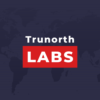The integration of reliable electrical systems in learning spaces is fundamental to creating an environment conducive to education and cognitive development. This goes beyond just providing light and power; it encompasses a range of factors that directly impact the quality of the learning experience. From the layout of the panelboards to the consistency of the power supply, every aspect of the electrical system plays a crucial role in shaping the learning environment.
Understanding the Link Between Electricity and Learning Environments
The link between electricity and learning environments is multifaceted. Reliable electrical systems ensure that educational tools and technologies, which are increasingly integral to modern teaching methodologies, function seamlessly. This reliability is vital not just for basic needs like lighting and heating, but also for powering computers, projectors, and other digital learning aids that have become essential in today’s educational settings. Panelboards, the central component of these systems, must be designed and maintained with the specific needs of an educational environment in mind, ensuring stable and uninterrupted power distribution.
The Basics of Electrical Systems in Educational Settings
In educational settings, electrical systems must be robust and flexible to support a variety of educational activities. Panelboards in these environments are typically designed to handle higher loads, catering to the simultaneous operation of multiple high-energy-consuming devices. Moreover, these systems need to be adaptable to accommodate the changing technological landscape in education. The layout and capacity of the electrical systems, including panelboards, need to be planned meticulously to ensure they can meet current and future demands while maintaining safety and efficiency.
How Electricity Impacts Learning and Cognitive Function
Stable and reliable electricity is directly linked to effective learning and cognitive function. Consistent and adequate lighting, for example, is crucial for maintaining students’ focus and reducing eye strain, which can directly impact concentration and information retention. Similarly, stable power ensures that digital learning tools are always available and functional, facilitating a seamless learning experience. Interruptions in power can disrupt the learning process, causing distractions and impeding the educational flow. In this regard, reliable electrical systems, underscored by well-designed panelboards, are not just a logistical necessity but a foundational element in creating an environment that supports cognitive development and academic success.
Reliable electrical systems, especially the design and management of panelboards, play a crucial role in creating and maintaining effective learning spaces. Their impact goes beyond the physical infrastructure, influencing the quality of education and the cognitive development of students, making them an indispensable component in the realm of education.
Key Components of a Reliable Electrical System for Learning
A reliable electrical system is essential in creating a conducive learning environment. It involves more than just providing power; it’s about ensuring stability, safety, and adaptability to the evolving needs of educational spaces. Key components of such a system include advanced panelboards, efficient wiring, surge protection, and energy management systems. These elements work together to provide a stable and safe power supply, which is crucial in today’s technologically driven educational settings.
The Importance of Stable Power Supply in Classrooms
Stable power supply in classrooms is critical for several reasons. Firstly, it ensures that educational technology tools, such as computers, projectors, and interactive whiteboards, operate without interruption. This uninterrupted operation is vital for maintaining the flow of teaching and for the engagement of students. Fluctuations in power can disrupt the learning process, leading to loss of teaching time and diminished educational outcomes. Secondly, stable power is essential for the proper lighting of classrooms. Adequate lighting is necessary not only for visibility but also for creating an environment that is conducive to learning and helps maintain the focus and attention of students. In this regard, panelboards play a pivotal role in managing and distributing electrical power efficiently and reliably across different areas of a learning facility.
Advanced Panelboards and Their Role in Learning Spaces
Advanced panelboards are at the heart of reliable electrical systems in learning spaces. These modern panelboards are designed to handle the specific demands of educational environments, which often include a variety of high-power-consuming devices. They are equipped with features such as circuit breakers to protect against overloads and faults, which are crucial in preventing power outages and ensuring the safety of students and staff. Additionally, modern panelboards can be integrated with smart technology, allowing for remote monitoring and control of the power supply. This integration can lead to improved energy efficiency, reduced operational costs, and the ability to quickly address any electrical issues, thereby minimizing downtime and disruption in the learning process.
In summary, the key components of a reliable electrical system, particularly the implementation of advanced panelboards, play a crucial role in ensuring stable and safe power in educational environments. These systems not only support the seamless use of technology in learning but also contribute to creating a safe, comfortable, and productive educational atmosphere. The investment in reliable electrical systems in learning spaces is an investment in the quality of education and the overall well-being of students and educators.
Designing Learning Spaces with Electrical Reliability in Mind
Designing learning spaces with a focus on reliable electrical systems is essential in the modern educational landscape. This approach goes beyond basic electrical requirements, emphasizing the creation of environments that are both safe and conducive to learning. It involves strategic planning and implementation of electrical systems that cater to the dynamic needs of educational spaces. The goal is to ensure that these spaces are not only equipped to handle current technological demands but are also adaptable for future advancements in educational technology.
Incorporating Smart Electrical Solutions for Enhanced Learning
Incorporating smart electrical solutions is a key factor in enhancing the functionality and efficiency of learning spaces. These solutions include intelligent panelboards that can monitor and adjust power usage in real time, energy-efficient lighting systems with automated controls, and surge protection systems that safeguard sensitive educational equipment. Smart electrical solutions also offer the benefit of remote monitoring and maintenance, ensuring any potential issues can be addressed promptly, thus minimizing disruptions. The integration of IoT (Internet of Things) devices in these systems allows for a more interactive and responsive learning environment. For instance, smart lighting that adjusts to natural light levels can create an ambiance that is optimal for learning, contributing to better concentration and reduced eye strain for students.
Case Studies: Successful Implementations of Reliable Electrical Systems
Several educational institutions have showcased the benefits of implementing reliable electrical systems in their learning spaces. One such case study involves a university that upgraded its electrical infrastructure to include smart panelboards and energy-efficient lighting. This upgrade resulted in a significant improvement in energy efficiency and a reduction in maintenance costs, while also providing a stable and reliable power supply for their high-tech learning tools. Another example is a primary school that integrated advanced surge protection systems, ensuring the safety and longevity of their digital learning devices. This integration not only enhanced the learning experience but also provided peace of mind regarding the safety of the students and the equipment. These case studies demonstrate the tangible benefits of designing learning spaces with reliable and advanced electrical systems, highlighting their importance in modern education.
Designing learning spaces with electrical reliability in mind is key to creating effective and safe educational environments. By incorporating smart electrical solutions and learning from successful case studies, educational institutions can ensure their spaces are well-equipped to support advanced learning technologies and adapt to future educational needs. Reliable electrical systems in learning spaces are not just a technical necessity but a fundamental component of a modern, dynamic, and effective learning environment.
Future Trends: Evolving Electrical Needs in Modern Learning Environments
As we progress into the future, the electrical needs of modern learning environments are evolving rapidly, driven by technological advancements and changing educational paradigms. This evolution calls for a proactive approach to designing and maintaining reliable electrical systems in learning spaces. The focus is shifting towards creating flexible, scalable, and technologically integrated environments that can adapt to the emerging trends in education. Understanding and anticipating these changes is crucial for educators, administrators, and electrical engineers alike to ensure that learning spaces remain effective and relevant.
The Role of Technology in Shaping Future Learning Spaces
The role of technology in shaping future learning spaces is becoming increasingly significant. Emerging technologies like virtual reality (VR), augmented reality (AR), and artificial intelligence (AI) are starting to find their place in the classroom, requiring reliable and robust electrical infrastructures to function effectively. These technologies demand not only a steady power supply but also a higher bandwidth and more complex electrical systems, including advanced panelboards capable of handling increased loads. The integration of these technologies into learning spaces aims to enhance educational experiences, making them more interactive, immersive, and personalized. Consequently, the electrical systems must evolve to support these technological advancements, ensuring they can be utilized to their full potential without interruption or failure.
Preparing for Tomorrow: Adapting Electrical Infrastructure for Advanced Learning Tools
Preparing for the future involves adapting existing electrical infrastructures to meet the demands of advanced learning tools. This adaptation includes upgrading panelboards to accommodate higher power loads, installing more efficient and controllable lighting systems, and ensuring that electrical systems are safe, sustainable, and energy-efficient. Moreover, the infrastructure must be flexible enough to accommodate future technological advancements. For instance, the growing trend of incorporating eco-friendly practices in educational institutions calls for the integration of renewable energy sources, like solar panels, into the electrical system. Additionally, the rise of online learning and digital resources necessitates reliable and uninterrupted power to support a multitude of digital devices and connectivity solutions. Educational institutions must therefore plan and invest in electrical systems that are not only reliable today but are also capable of adapting to the needs of tomorrow.
The evolving electrical needs in modern learning environments highlight the importance of reliable electrical systems capable of supporting current and future technological trends. By proactively adapting and upgrading these systems, educational institutions can ensure that their learning spaces remain conducive to education in an increasingly digital and technology-driven world. Reliable electrical systems in learning spaces are, therefore, a key component in the journey towards a more advanced, interactive, and effective educational landscape.
In addition to these technological considerations, there is also a growing emphasis on creating learning environments that are not only technologically advanced but also environmentally conscious and sustainable. This includes integrating smart energy management systems that optimize power usage, reducing waste and costs. These systems can intelligently adjust lighting and climate controls based on occupancy and time of day, contributing to a more energy-efficient and comfortable learning environment. Moreover, as educational institutions increasingly adopt green initiatives, their electrical systems must be compatible with renewable energy sources, like wind and solar power, to further reduce their carbon footprint. By focusing on these future trends and preparing accordingly, educational spaces can become models of innovation, sustainability, and efficiency, fully supported by reliable and adaptable electrical systems.

